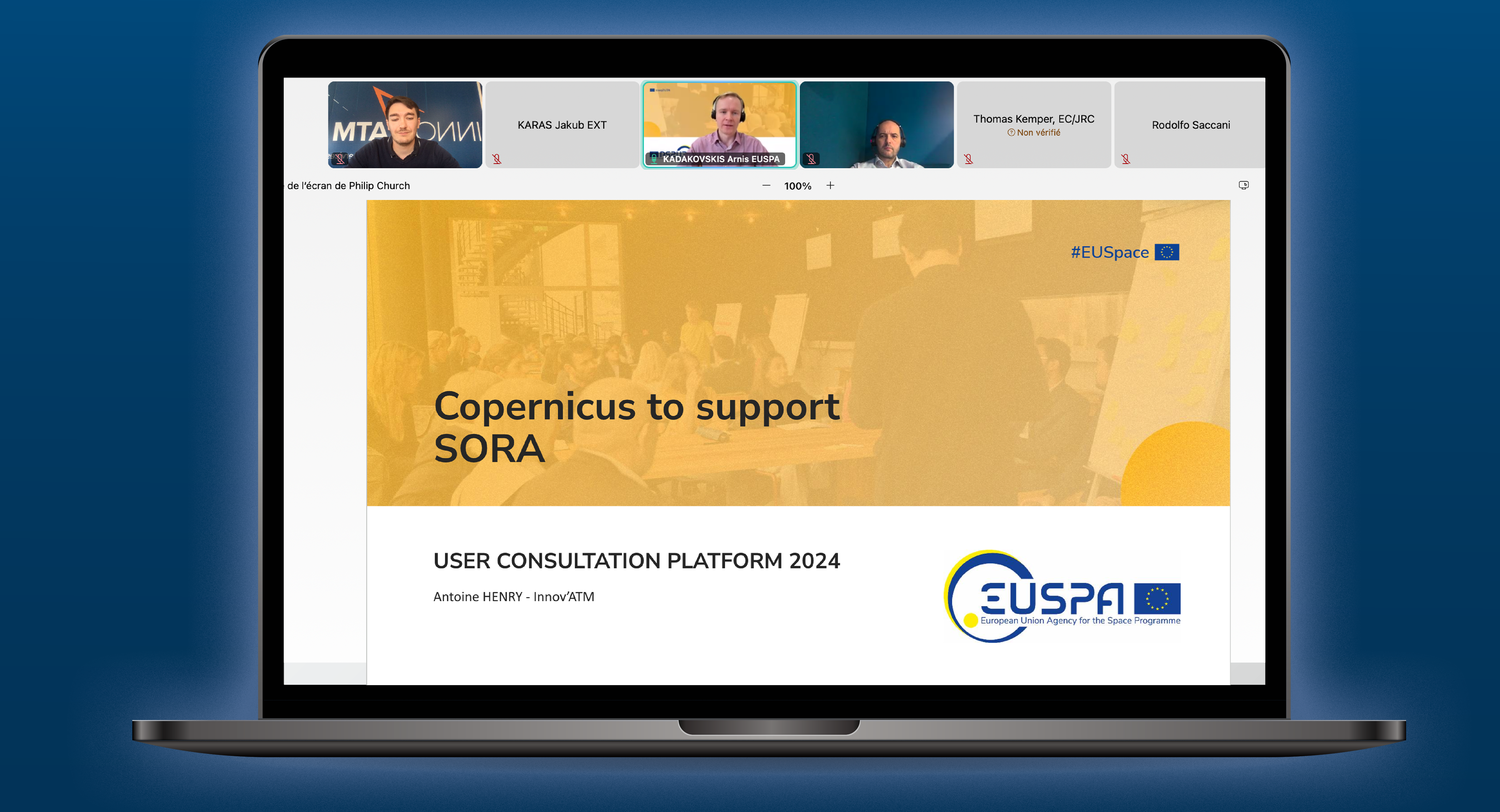Innov'ATM selected by the EU Agency for SPAce Programme (EUSPA) for the integration of COPERNICUS data into its DroneKeeper® solution for SORA analysis.
On 8 October 2024, the inauguration of the integration of COPERNICUS data collected by EUSPA into the DroneKeeper® solution took place, in the presence of DSAC, EASA and EUSPA.
The objective of the project was to introduce data from the COPERNICUS GHSL (Global Human Settlement Layer) programme into the ground risk assessment process integrated into SORA files, thus enabling a major step forward for the safety of drone flights and the resulting mission possibilities.
Geospatial data for greater risk accuracy

The integration of GHSL data, which provides detailed information on population density, enables a more detailed analysis than the traditional databases used in France.
Traditional data, from censuses or non-updated tax declarations, can be approximate.
Thanks to GHSL data, it was possible to refine the ground risk assessment model by taking into account the potential trajectory of the drone and the classification of the flight zones overflown for example.
This makes it possible to accurately count the number of people exposed to the potential risk of ground impact, thus contributing to a more rigorous and better justified SORA risk analysis.
Towards safer drone mission management with cutting-edge data
Innov’ATM is actively participating in the presentation of this new risk analysis model to the authorities, while continuing flight operations and the collection of the necessary data. A detailed analysis of the post-flight data will be carried out, with a full report of the results to validate this advance in risk assessment.
We remain committed to integrating the latest technological advances to ensure the safety and efficiency of drone operations, thus contributing to creating a safer and more sustainable low-altitude airspace.
We would like to thank our partners on this ambitious project:
EUSPA, EGIS group, BL Aviation and Instadrone



